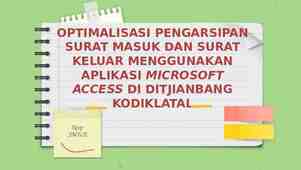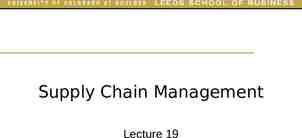Chapter 8: Patient Safety Tools: Integrating Quality and Managing Risk
27 Slides1.18 MB
Chapter 8: Patient Safety Tools: Integrating Quality and Managing Risk
Why do we talk about Quality in the Risk Management setting? Risk management makes contributions to quality by assuring that hazards and injuries are less likely to occur for both patients and employees. Risk management works to prevent malpractice claims by identifying, analyzing and treating risks which quality assessment tries to eliminate
Predicting Hazards and Malpractice Prediction is not specific in risk management – can say an event is likely to occur, but not when or to what extent Confounding factor: increased patient satisfaction tends to correlate to lower likelihood of legal action by a patient Incident Reporting: can assist the risk manager in identifying causes
Healthcare Acquired Conditions Conditions for which, when acquired during admission in the health facility, CMS will not reimburse. Examples include: – Foreign object retained after surgery – Air embolism – Blood incompatibility – Pressure ulcer stage III and IV – Falls and trauma – Catheter-associated infection – Manifestations of poor glycemic control
Importance of Communication Effective communication is a factor in the likelihood of a patient deciding not to sue a provider as it has impact on patient satisfaction Informed Consent is the result of effective communication between the provider and patient. The patient needs to know the possible outcomes of treatment, both good and bad, so as to have proper understanding and expectations.
What if Unanticipated Outcomes Occur? Disclosure of unanticipated outcomes is mandatory. The ethical question is NOT should it be disclosed, but how and by whom. Risk managers need to plan, prepare and educate staff to avoid inappropriate disclosure
Enterprise Risk Management (ERM) An approach to assessing and addressing risks from all sources that either threaten the organization’s objectives or represent opportunities to exploit competitive advantage. Categories of Risk – – – – – – – Operational/Clinical Risks Financial Risks Human Capital Risks Strategic Risks Legal/regulatory Risks Technological Risks Natural Disaster/Hazard Risks
Difference from Traditional Risk Management Traditional Risk Management took a more clinically focused approach and examined risks individually. With ERM, the Risk Manager has a larger focus and more strategic position. It begins with risk identification and determination of the relative importance of the risk
ERM Process ERM utilizes the steps in the traditional risk management process – Identify and analyze the exposures to loss – Examine the feasibility of alternative techniques – Select the best technique – Implement the technique – Monitor and improve the risk management program
Quality and Risk Management Historically Risk Management and Quality initiatives were seen as separate. Today, organizations utilize a more integrated approach, recognizing that many risk management errors are breakdowns in process (quality) rather than individual error.
Quality Management Techniques Quality Assurance – a formal, systematic program by which care given to patients is measured against established criteria. Quality Management – encompasses monitoring and evaluating quality issues, followed by changes in the system.
Quality Management Techniques Total Quality Management – W. E. Deming TQM focuses on the system not the individual – 85/15 rule – 85% of problem is related to system failure and 15% is the fault of the people involved Three premises: – Quality is important and can be measured – People are part of the solution not the problem – Change is fundamental and can be managed
Quality Management Techniques Continuous Quality Improvement (CQI) – process used to improve their ability to satisfy customer expectations. – Directs attention to the fundamental mechanism that drives a process or system. – Focuses on techniques to accomplish positive change by assessing a process that leads to an intervention. – Use of sentinel events
4 Stages for Process Improvement Dr. Steven Speer recommends the following states to assist with process improvement: – System design and operation – Problem solving and improvement – Knowledge sharing – Developing high velocity skills in others
Other Quality Tools from Industry Lean Management focuses on reducing waste and eliminating error in processes. Six Sigma focuses on eliminating causes of defects or error and minimizing variability in process.
Barriers to Quality Management Initiatives Separation of administrative functions – CQI implementation can be difficult as physicians tend to focus on patients not administrative responsibilities Hierarchical and bureaucratic structure makes empowerment difficult Lack of recognition of problem-solving initiative Lack of vision of the desired outcome Inflexible attitude of “this is how it’s always been done”
Quality Improvement Teams Quality Improvement Teams (QIT) are change agents. Can investigate and recommend improvements, many times in conjunction with the risk manager who may or may not be a member of the team.
Customer is Key The quality improvement process views the customer as central to its purpose. It is imperative to know who the customer is and their importance to providing care. – Note: the customer is not always the patient.
CQI and Labor Relations Risk managers should make sure that any QIT or other CQI program teams are reviewed and deemed allowable by the NLRA. – Some teams may be viewed as labor organizations dominated by the employer if not structured properly
Determining the Effectiveness of Risk Management There is currently no research to definitively demonstrate the effectiveness of risk management programs. However, risk management programs are important as adverse events do happen, and there is a need to investigate and implement strategies/improvements to minimize the risk of adverse events recurring.
Program Evaluation What are the areas of responsibility or functions defined for risk management? Which information or data are collected and available within each of these areas of responsibility or function? Can this information or data be categorized and analyzed systematically to derive measures of effectiveness?
Use of Standards A standard must be reasonable, achievable and measurable Results standards: what is accomplished Activity standards: means by which something is accomplished
Evaluation Tools Root Cause Analysis Failure Mode, Effect and Criticality Analysis
External Evaluation The Joint Commission may evaluate a healthcare organization’s risk management program during the accreditation process. Third party payers may also evaluate risk management programs to determine insurability of the organization. Benchmarking with other organizations.
Practice Guidelines Practice guidelines can set a standard of care to help minimize risk May be difficult to monitor Risk increases as departure from stated guidelines can be a source of liability
High Exposure Issues Clinical Activities Monitoring Medical Records Electronic Health Records HIPAA Credentialing Withholding of Treatment Disclosure
Summary Quality and Risk Management overlap Risk Managers can utilize quality techniques and reports to assess risk and recommend improvements
































